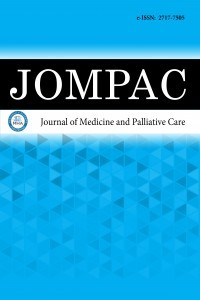1. Lamtai M, Fihri Y, Faid S, et al. Coronary artery ectasia: case reports and literature review. Cureus. 2024;16(6):e62011. doi:10.7759/cureus.62011
2. Nough H, Moradi F, Varasteravan HR, et al. Assessment of prevalence and risk factors of isolated coronary artery ectasia: a 5-year double-center retrospective study in Yazd, Iran. Caspian J Intern Med. 2024; 15(2):244-250. doi:10.22088/cjim.15.2.244
3. Ahmad M, Mungee S. Coronary ectasia. In StatPearls [Internet]. StatPearls Publishing. 2022.
4. Ozcan OU, Gulec S. (2013). Coronary artery ectasia. Cor et Vasa. 2013; 55(3):e242-e247. doi:10.1016/j.crvasa.2013.01.003
5. Jiang L, Wei W, Kang S, Li XL, Luo Y. Insights into lipid metabolism and immune-inflammatory responses in the pathogenesis of coronary artery ectasia. Front Physiol. 2023;14:1096991. doi:10.3389/fphys.2023.1096991
6. Esposito L, Di Maio M, Silverio A, et al. Treatment and outcome of patients with coronary artery ectasia: current evidence and novel opportunities for an old dilemma. Front Cardiovasc Med. 2022;8:805727. doi:10.3389/fcvm.2021.805727
7. Alkhouli MA, Gil IJN, American College of Cardiology. Coronary ectasia: clinical implications and treatment options. ACC.org. 2019. https://www.acc.org/Latest-in-Cardiology/Articles/2019/06/07/08/24/Coronary-Ectasia
8. Salvagno GL, Sanchis-Gomar F, Picanza A, Lippi G. Red blood cell distribution width: a simple parameter with multiple clinical applications. Crit Rev Clin Lab Sci. 2015;52(2):86-105. doi:10.3109/10408363.2014.992064
9. Don Burl R, Kaysen G. Poor nutritional status and inflammation: serum albumin: relationship to inflammation and nutrition. Seminars in dialysis. Vol. 17. No. 6. Oxford, UK: Blackwell Science Inc, 2004. doi:10. 1111/j.0894-0959.2004.17603.x
10. Zhao N, Hu W, Wu Z, et al. The red blood cell distribution width-albumin ratio: a promising predictor of mortality in stroke patients. Int J Gen Med. 2021;14:3737-3747. doi:10.2147/IJGM.S322441
11. Li JJ, Nie SP, Qian XW, Zeng HS, Zhang CY. Chronic inflammatory status in patients with coronary artery ectasia. Cytokine. 2009;46(1):61-64. doi:10.1016/j.cyto.2008.12.012
12. Eckart A, Struja T, Kutz A, et al. Relationship of Nutritional status, ınflammation, and serum albumin levels during acute ıllness: a prospective study. Am J Med. 2020;133(6):713-722.e7. doi:10.1016/j.amjmed.2019.10.031
13. Vrachatis DA, Papathanasiou KA, Kazantzis D, et al. Inflammatory biomarkers in coronary artery ectasia: a systematic review and meta-analysis. Diagnostics (Basel). 2022;12(5):1026. doi:10.3390/diagnostics 12051026
14. Chen S, Guan S, Yan Z, et al. Prognostic value of red blood cell distribution width-to-albumin ratio in ICU patients with coronary heart disease and diabetes mellitus. Front Endocrinol (Lausanne). 2024; 15:1359345. doi:10.3389/fendo.2024.1359345
15. Jian L, Zhang Z, Zhou Q, Duan X, Ge L. Red cell distribution width/albumin ratio: a predictor of ın-hospital all-cause mortality in patients with acute myocardial ınfarction in the ICU. Int J Gen Med. 2023;16:745-756. doi:10.2147/IJGM.S393393
16. Li XL, Hong LF, Jia YJ, et al. Significance of red cell distribution width measurement for the patients with isolated coronary artery ectasia. J Transl Med. 2014;12:62. doi:10.1186/1479-5876-12-62
17. Cai Z, Wang Y, Li L, et al. Development and validation of a nomogram for predicting the risk of adverse cardiovascular events in patients with coronary artery ectasia. J Cardiovasc Dev Dis. 2021;8(12):186. doi:10. 3390/jcdd8120186
18. Liu Y, Sun S, Liu L. Association between the red blood cell distribution width-albumin ratio and cardiovascular diseases. Front Cardiovasc Med. 2025;12:1529533. doi:10.3389/fcvm.2025.1529533
19. Li N, Li J, Wang K. Association between red cell distribution width-albumin ratio and all-cause mortality in intensive care unit patients with heart failure. Front Cardiovasc Med. 2025;12:1410339. doi:10.3389/fcvm.2025.1410339
20. Arba IF, Multazam CCZ, Widiarti W, et al. Red blood cell distribution width to albumin ratio as novel prognostic biomarker in cardiovascular disease. Eur Heart J. 2024;45(Supplement_1):ehae666-3741. doi:10.1093/eurheartj/ehae666.3741

